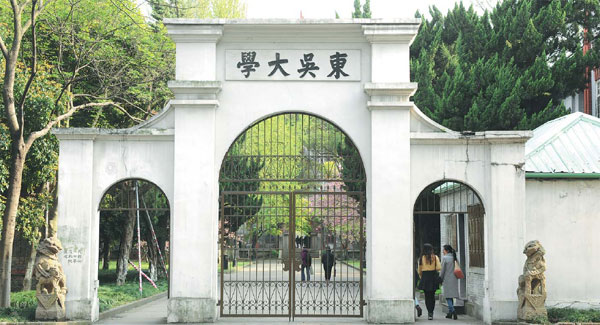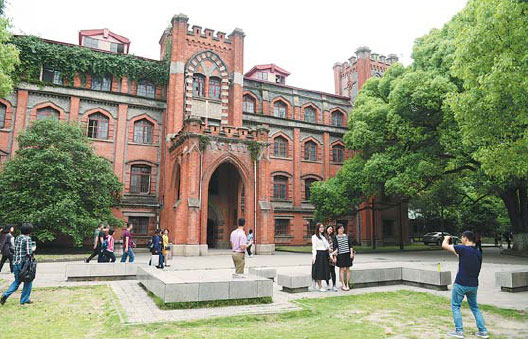Ideals for a better self
Soochow university shares free-thinking leaders in suzhou and beyond
Xiong Sidong opened a wooden gate at the end of a hallway, walked into a small chapel, turned around and faced the portraits hanging high on one of the walls.
"This was where students of the English language department had their lessons. Doctorate degrees were also awarded here among other ceremonies of honor held," the president of Soochow University said, his eyes glittering.
He was looking up at photos of eight presidents in the university's early history, from American D. L. Anderson to the late Chinese educationist and diplomat Yang Yongqing.
The university was founded by Methodists in East China's Suzhou city in 1900 after the merging of three institutions. In 1951, alumni members who had fled to Taiwan after New China was born in 1949, established the Soochow University in Taipei. The two universities have cooperated on various projects since the 1980s.
"Unto a full grown man" is the motto of both universities. It was given by Yang, the university's first native Chinese president, in the 1920s. Yang opened the campus to women in 1928, making it one of the first educational institutions to grant women academic degrees.
Nine decades later, the word "ideal" is at the heart of the new president's ambitions. Xiong is constantly worried about it in a modern society and is exploring new ways to home in the idea to his students.
"I have been on campus for so many years. I see some students with less and less idealism these days," said Xiong, who once taught medicine at Fudan University in Shanghai.
"More than 90 percent of genes are the same between people and mice. Our advantage as human beings is that we can make changes happen. We never stop pursuing and we keep improving ourselves."
Xiong urges his students to follow the university's motto. Challenging the country's prevalent system of education earlier, he created a variety of schools and programs in order to make sure that his students have a solid foundation in the arts and sciences before they choose a subject to major in.
He set up the university's Ching-wen College in 2011, in which students are given intensive courses in most disciplines covering the arts and sciences other than the majors that they have applied to. It was named after the late Hong Kong-based industrialist and philanthropist Chu Ching-wen.
Xiong also founded the Tang Wenzhi College in 2012, named after the educator, engineer and literati who founded one of the schools that merged into Soochow University at the beginning of the 20th century. Students at the liberal arts college are encouraged to thoroughly study about art, literature, history, philosophy and other fields before specifically picking one of them.
He also launched programs of excellence for engineers, doctors and so on. His dream for students of his profession is to become a "medical literati". He gets medical students to study the arts, law, ethics and philosophy besides the sciences.
"Medical graduates should not only have skills as doctors but also a deep understanding of humanitarian care and the profession's universal spirit."
His ambition for the university, which has more than 42,000 students, is to grow into a world-class institution.
In his eyes, the graduates of today are going to have a real influence on society in the next five to 10 years, he said. "Education breed leaders. It is, in a way, always on the 'opposite side,'" he said.
People with higher education should scrutinize social norms and make changes that can lead to further development. They don't need to conform, he said.
His university also helps preserve the past. Its architecture students mainly focus on classical architecture, like the building, excavation and conservation of Suzhou's splendid gardens. It is the first higher education center in China to invite carpenters to lecture its students about their skills handed down through generations.
edzhang@chinadaily.com.cn
|
An old gate of Soochow University in Suzhou. provided to China Daily |
|
|
(Shanghai Start 06/24/2016 page11)
















